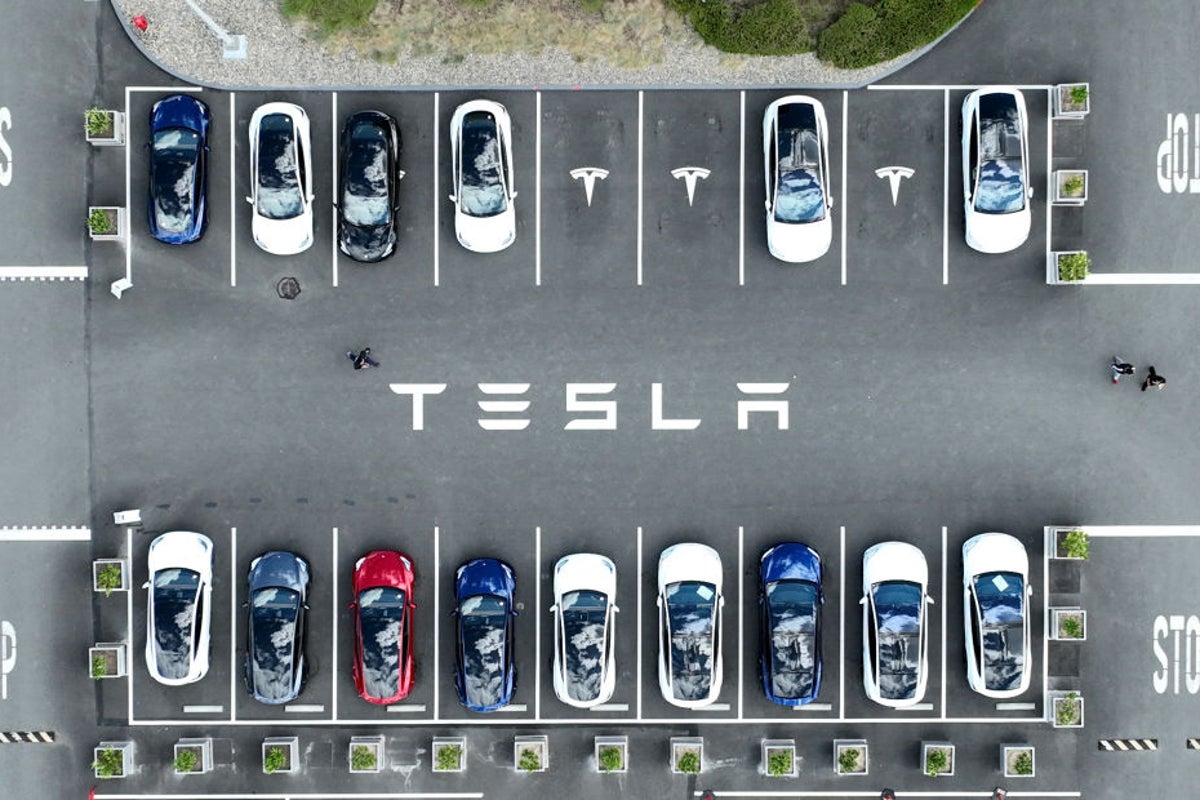
Car buyers are rushing out to buy electric vehicles as the clock ticks down on a tax credit program allowing them to save thousands on new and used cars.
The federal EV (electric vehicle) tax credit is ending on September 30. The program, which allows EV buyers to claim a tax credit of up to $7,500 on a new vehicle and up to $4,000 on a used vehicle, was originally slated to last until 2032, but President Donald Trump’s “One Big Beautiful Bill Act” is bringing it to a close years earlier.
According to an analysis from the Detroit Free Press using data collected from Cars.com, approximately half of buyers considering an EV purchase are accelerating their purchases to try to get them in before the deadline.
The website told the outlet that demand for new EVs on its site are up by 33 percent when compared to a year ago, and up 22 percent for used EVs over the same time period.
In August, Cars.com conducted a survey asking its customers what was motivating them to buy EVs, and nearly 75 percent of the 950 respondents said that the federal tax credit was a “major or contributing factor” to their decision.
The federal EV tax credit was implemented in 2022 under the Biden-era Inflation Reduction Act, and since then sales of EVs have been steadily increasing.
Data from Argonne National Laboratory tracking EV sales found that EV sales in the U.S. for August 2025 were up 14.7 percent over the same time period in 2024. In 2024, EV sales were up 7 percent over the number of vehicles sold in 2023.
The laboratory found that, cumulatively, more than 7.3 million plug-in EVs have been sold in the U.S. since 2010.
Used EV sales were up nearly 60 percent in August 2025 over the same period last year, according to data from Cox Automotive shows.
“As we approach the sunset of the IRA tax credit, we expect September to mirror August’s elevated sales activity, driven by time-sensitive purchase and lease offers,” Cox said in its report.
Some experts predict that interest in EVs will come to a halt once the tax incentive ends on the 30th.
Karl Brauer, the executive analyst at iSeeCars.com, told the Detroit Free Press that EV sales are “going to crater” once the incentive wraps.
He predicted that there will be “almost no buyers” after the 30th because EVs are typically priced higher than gasoline vehicles.
Tim Horvick, the owner of San Tan Ford dealership in Phoenix, told CBS News that the end of the credit is a concern for him, and admitted “it could be challenging” to move EVs once the incentive expires.
Cars.com’s Detroit bureau chief had a different take, telling the Detroit Free Press that even after the deadline, buyers will still be able to take advantage of incentives offered by state and local governments. He added that car manufacturers like Nissan, Chevrolet, and Hyundai are already planning to roll our new, lower-priced EV models.
In fact, lower prices for EVs, at least in the immediate aftermath of the tax credit expiration, may be on the way. Assuming there is a significant drop-off in EV sales beginning in October, car manufacturers who produce EVs will have to consider how to price their supply of the vehicles amid a sharp decline in demand.
In 2019, and an EV tax credit for Tesla and General Motors ended, both car companies responded to the decrease in demand by cutting prices, according to CNN.
If prices are cut, it won’t likely stay that way longterm. Manufacturers are likely going to cut back on the production of EV models to ease the supply pressure to lower their prices.
While some analysts are more pessimistic than others about the fate of EVs, a survey by Cox found that, for more than half of prospective EV buyers, saving money with a tax credit isn’t their main interest in purchasing an EV.
According to Cox, 65 percent of those prospective buyers said they planned to buy regardless of the tax credit, and only 20 percent said they would instead choose to buy a gas or hybrid vehicle.
The same survey found the respondents still hoping to buy an EV were more concerned with the fuel and maintenance savings, vehicle performance, and with environmental concerns than their potential savings via a tax credit.
